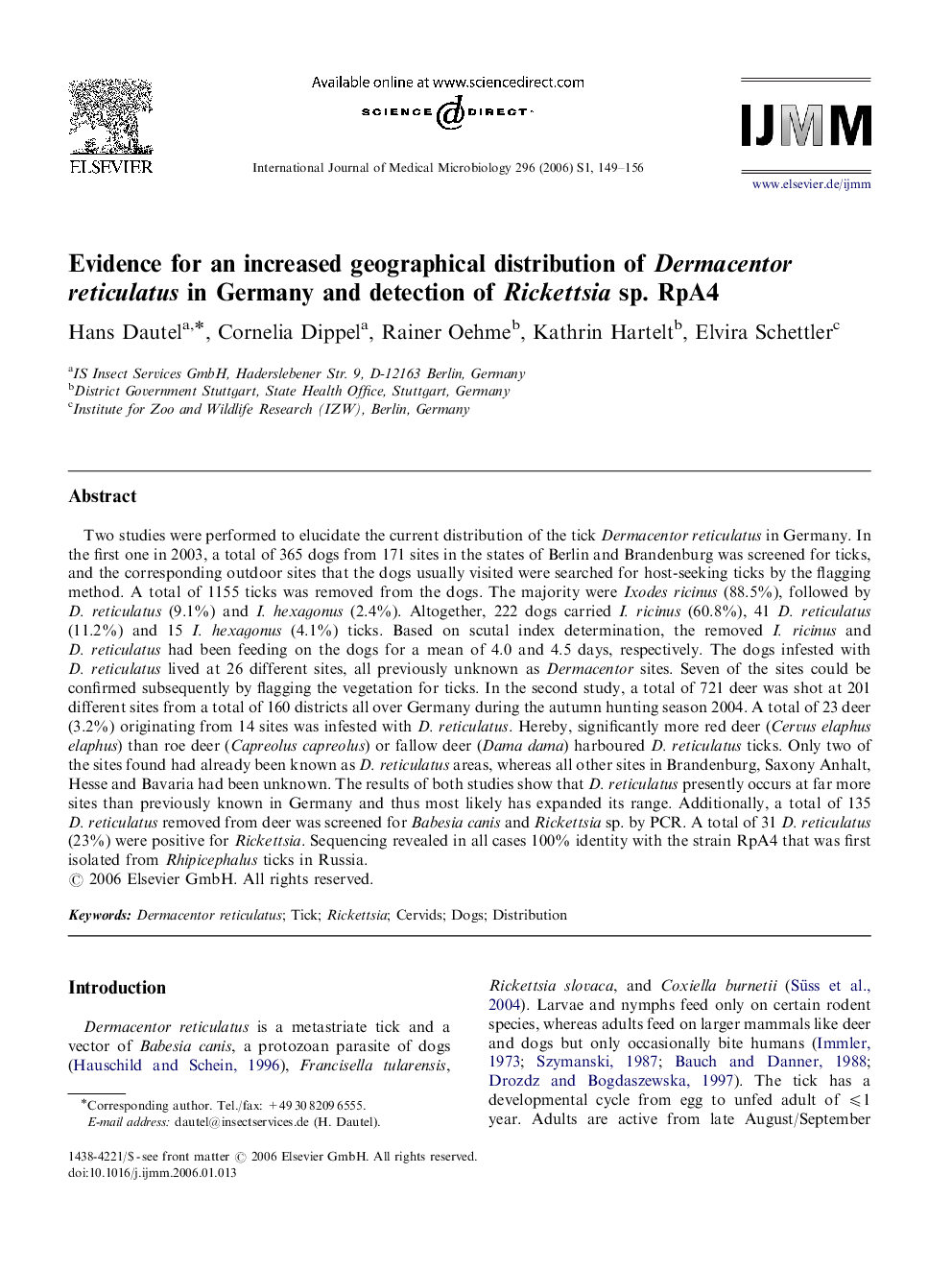| کد مقاله | کد نشریه | سال انتشار | مقاله انگلیسی | نسخه تمام متن |
|---|---|---|---|---|
| 2055087 | 1543760 | 2006 | 8 صفحه PDF | دانلود رایگان |

Two studies were performed to elucidate the current distribution of the tick Dermacentor reticulatus in Germany. In the first one in 2003, a total of 365 dogs from 171 sites in the states of Berlin and Brandenburg was screened for ticks, and the corresponding outdoor sites that the dogs usually visited were searched for host-seeking ticks by the flagging method. A total of 1155 ticks was removed from the dogs. The majority were Ixodes ricinus (88.5%), followed by D. reticulatus (9.1%) and I. hexagonus (2.4%). Altogether, 222 dogs carried I. ricinus (60.8%), 41 D. reticulatus (11.2%) and 15 I. hexagonus (4.1%) ticks. Based on scutal index determination, the removed I. ricinus and D. reticulatus had been feeding on the dogs for a mean of 4.0 and 4.5 days, respectively. The dogs infested with D. reticulatus lived at 26 different sites, all previously unknown as Dermacentor sites. Seven of the sites could be confirmed subsequently by flagging the vegetation for ticks. In the second study, a total of 721 deer was shot at 201 different sites from a total of 160 districts all over Germany during the autumn hunting season 2004. A total of 23 deer (3.2%) originating from 14 sites was infested with D. reticulatus. Hereby, significantly more red deer (Cervus elaphus elaphus) than roe deer (Capreolus capreolus) or fallow deer (Dama dama) harboured D. reticulatus ticks. Only two of the sites found had already been known as D. reticulatus areas, whereas all other sites in Brandenburg, Saxony Anhalt, Hesse and Bavaria had been unknown. The results of both studies show that D. reticulatus presently occurs at far more sites than previously known in Germany and thus most likely has expanded its range. Additionally, a total of 135 D. reticulatus removed from deer was screened for Babesia canis and Rickettsia sp. by PCR. A total of 31 D. reticulatus (23%) were positive for Rickettsia. Sequencing revealed in all cases 100% identity with the strain RpA4 that was first isolated from Rhipicephalus ticks in Russia.
Journal: International Journal of Medical Microbiology - Volume 296, Supplement 1, 22 May 2006, Pages 149–156